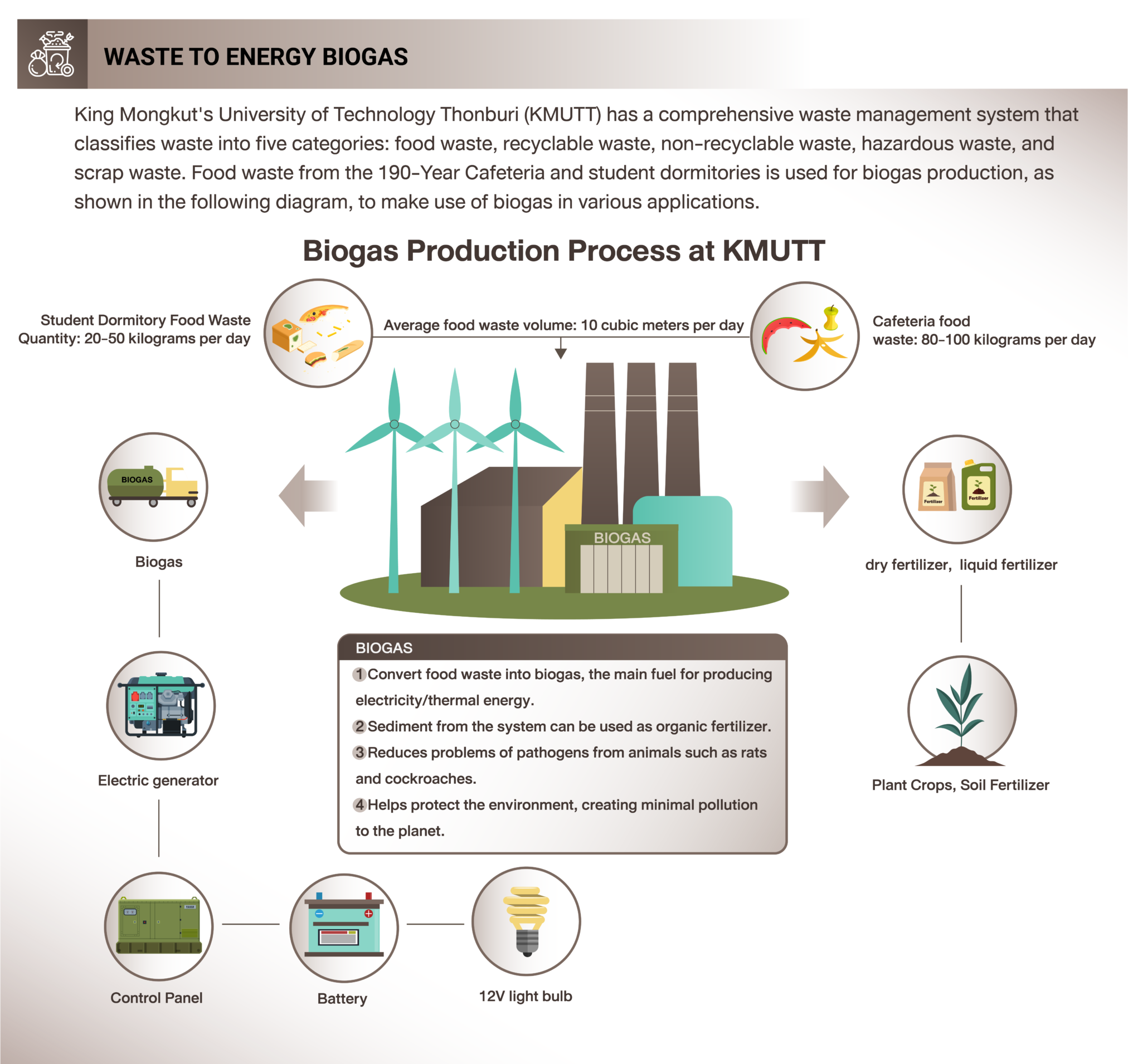KMUTT provide Municipal solid waste management system by educate all in campus with KMUTT’s Municipal solid waste management system Manual. The manual have four main parts including waste segregation, waste collection , waste utilization and Recyclable waste bank. The most importance part of Municipal solid waste management is waste segregation. At KMUTT, four colored bins are provided including green, yellow, blue and red which represent for organic waste, recycled waste, non–recycled waste, and toxic waste respectively. Those organic waste such as leaves, grass, fruit and cooked food are collected for composting process where organic matter has been decomposed into fertilizer for use with tree and plant around campus. In one month, we can produce compost from organic waste more than 300 kg.
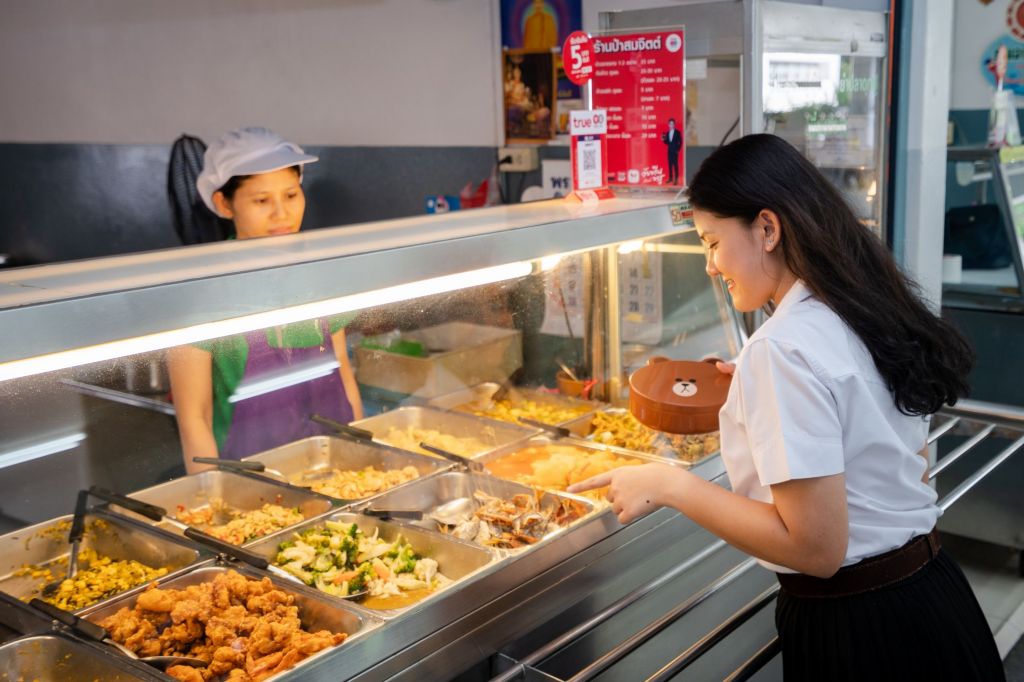
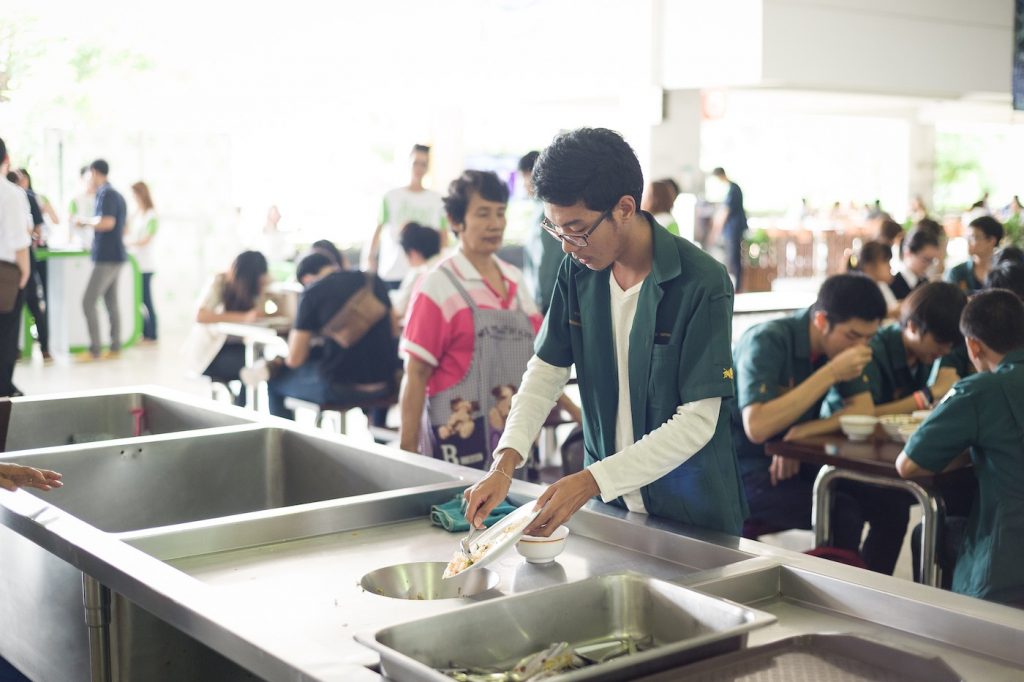
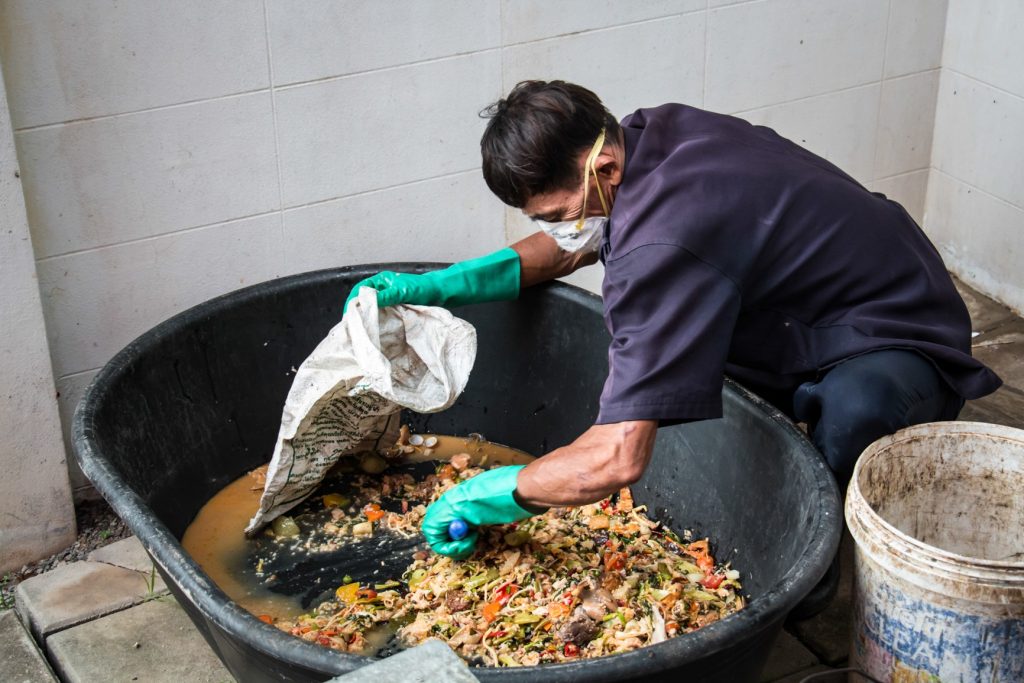
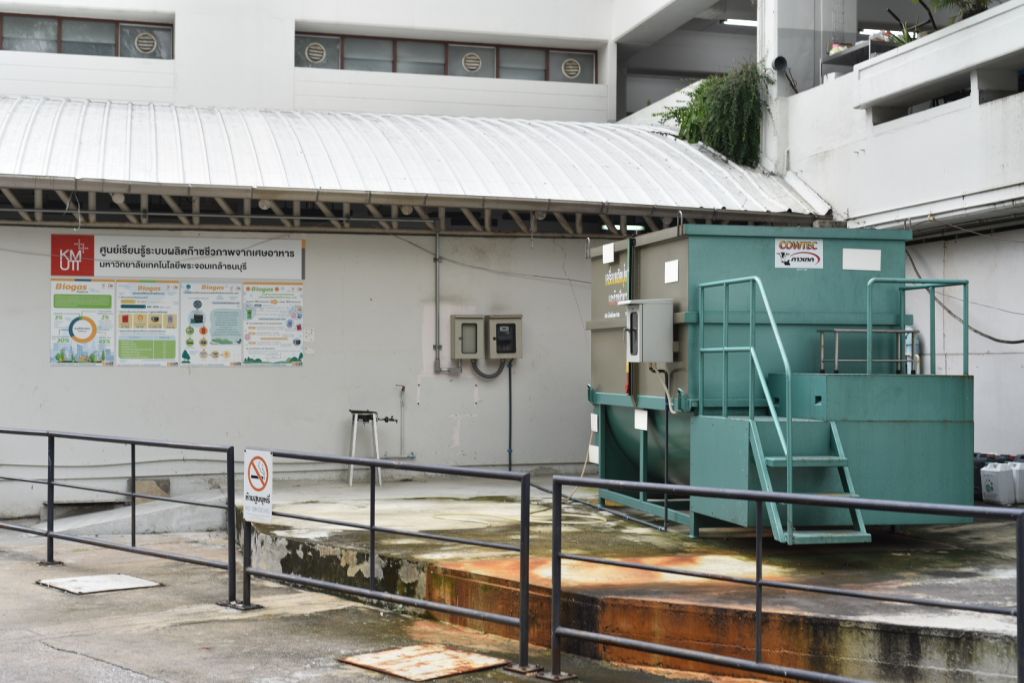
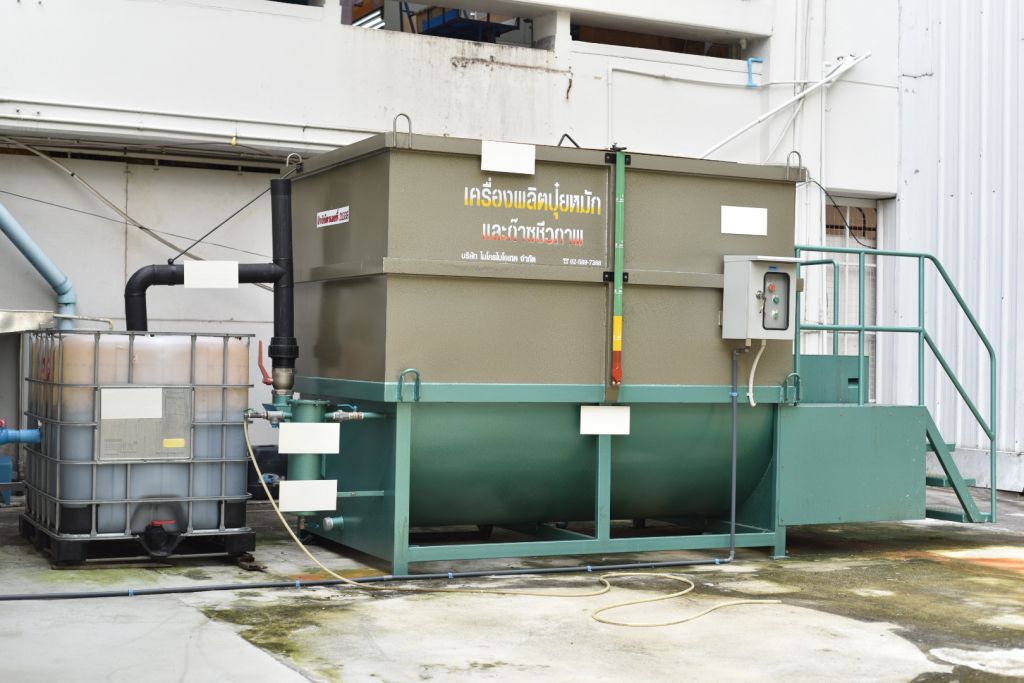
Organic waste treatment
In 2025, KMUTT successfully managed 34.04% of its total municipal solid waste as organic waste, amounting to 191,770 kg, reflecting the university’s continuous commitment to sustainable waste management and resource recovery.
Of this total, approximately 36,000 kg of food waste is processed through KMUTT’s Waste-to-Energy initiative, where an anaerobic digester converts food waste into biogas and fertilizer within 24 hours per batch. In addition, 3,984 kg of garden waste is processed at the Waste Utilizing Center, producing liquid fertilizer used to enrich campus greenery.
The remaining 151,786 kg of organic waste, including food scraps and garden residues, is transferred to authorized government facilities for proper treatment and disposal due to space limitations on campus.
Through these integrated systems, KMUTT produces 3,600 m³ of biogas annually, 12,264 kg of solid fertilizer, and 18,000 liters of liquid fertilizer each year. These outputs reduce the university’s carbon footprint by approximately 794,049 kg CO₂-e per year, while saving over 2,785 USD annually in waste management, LPG, and fertilizer costs.
KMUTT’s organic waste management framework demonstrates a proactive model for sustainability in Thai higher education — turning waste into energy and resources while advancing toward the target of achieving 100% conversion of food waste into biogas and fertilizer.
As of 2025, 35.23% of food waste has been successfully converted.
At KMUTT Cafeteria, tons of food are wasted including raw meat, vegetable peelings, bones and shells and leftovers dish. All of them are produced approximately 300 kg of food waste/day. Hence, KMUTT set up waste utilization program in organic waste to produced bio-gas by using food wastes from food center and canteen in the campus. The amount of 100 kg of food waste/day produce around 10 m3/day of bio-gas. This bio-gas is used for cooking and boiling water at canteen. Beside, there are also the by-product which is soil conditioner or fertilizer. These waste utilization activities reduce around 20 percentage of total municipal solid waste and make high benefits from waste to energy and waste to organic farm in the campus. There are four main advantages why the anaerobic digester is best option to the campus. First, cafeteria has a consistent in gas demand and waste generation which is predictable. The historical static data from University show that the number of student and university staffs are followed a similar pattern which is very helpful in plant well–design to enhance the efficiency of production. Second, the climate in Thailand is hot and humid as located in the tropical area. The climate is suitable for bacteria (Mesophilic and Thermophilic) to decompose organic matter and increase their product rate of methane gases. Third, soil conditioner which is by–product can be used for trees and flowers within campus. Last, this plant can be a learning center for student who interest in Renewable energy and waste utilization.
